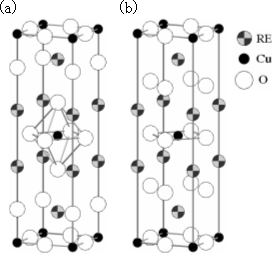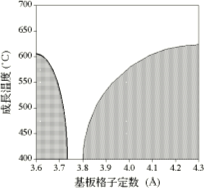- New Strategy for Material Synthesis -
Materials Science Laboratory
The rare-earth (RE) copper oxides of general chemical formula RE2CuO4 are known to be parent compounds of prototype high-Tc superconductors. They take two different crystal structures: K2NiF4 (6-fold Cu-O coordination) and Nd2CuO4 (4-fold) as shown in Fig. 1. The former accepts only hole doping, the latter only electron doping. The radius of RE3+ ions primarily determines which of the two structures forms. The K2NiF4 structure forms with large La3+ ions, while the Nd2CuO4 structure forms with smaller RE3+ ions, such as RE = Pr - Gd. Because of the thermal expansion mismatch between ionic RE-O and covalent Cu-O bonds, however, Nd2CuO4-type La2CuO4 is predicted to stabilize below around 425oC [1]. There have been a few attempts by bulk synthesis to stabilize Nd2CuO4-type La2CuO4 in the past [2]. However, a conventional solid-state reaction method requires a firing temperature of at least 500oC, so it could not produce single-phase Nd2CuO4-type La2CuO4. We demonstrate that low-temperature molecular-beam epitaxy indeed crystallizes La2CuO4 in the Nd2CuO4 structure [3].
Figure 2 shows the phase diagram on the selective stabilization of the K2NiF4 structure (white) versus the Nd2CuO4 structure (gray). The vertical axis is the growth temperature and the horizontal axis is the substrate lattice constant (a0). This is the first demonstration of artificial coordination control in copper oxides, which may open up the next strategic material search.
| [1] | A. Manthiram and J. B. Goodenough, J. Solid State Chem., 92 (1991) 231. |
| [2] | F. C. Chou et al., Phys. Rev. B, 42 (1990) 6172. |
| [3] | A. Tsukada, T. Greibe, and M. Naito, Phys. Rev. B, 66 (2002) 184515. |
 |
 |
||||
|
|